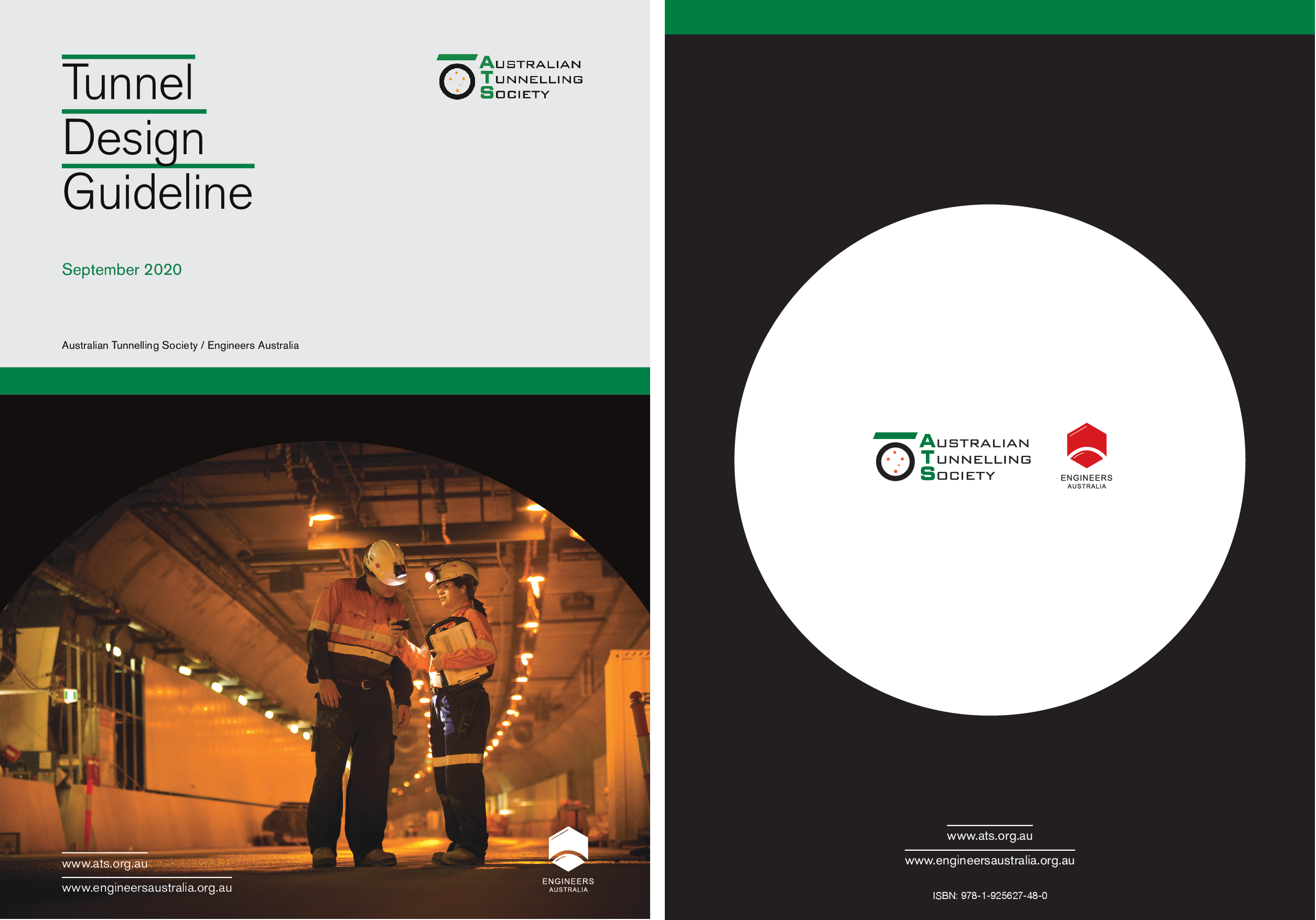This guide has been produced by a team of skilled and enthusiastic practitioners from the Young Members (YMs) of the Australian Tunnelling Society. We hope that this guide will help with your journey in the exciting world of tunnel design.
In November 2018, the ATS held a short course on tunnel design, and the YMs came together from across Australia. In discussion, the need was expressed for a general reference to elementary tunnel design. The decision was made that the ATSYMs would put together such a guide.
Early in 2019, a group of volunteers had been identified, and began meeting regularly. A table of contents was created, and the writing of sections divided up. By September 2019, the sections were passed around in the team for internal review, and in December 2019, the document was passed to the wider ATS for review. The review process is now complete, and you are looking at the first edition of the ATSYM Guide to Tunnelling Design.
This guide has been produced under two principles.
- Firstly, the guide is intended to grow with time. In order to produce a first edition in just over a year, the contents have been deliberately limited. We have chosen the more common topics that you might need. We hope that you, the reader, are interested enough to provide suggestions for improvement, both in terms of the content that does exist and in terms of content that would be useful to include. Please check the ATS website for news about the committee and process for the next edition.
- Secondly, this guide is intended to provide an introduction and guidance notes to each of the topics covered. There are useful references and an outline of the topic in question, as well as recommendations for the choices that designers usually make. However, the guide is not intended to be comprehensive. Please read the guidelines, look at the references, and carefully consider the recommendations that have been made. There will be many situations where these recommendations will need modification.
The construction industry, including tunnelling, plays a huge part in our energy and resource consumption hence contributes significantly to greenhouse gas (CO2) emissions. Working with all stakeholders’ design engineers can help reduce greenhouse gas emissions, reduce waste and lessen environmental impacts through the decisions taken on a daily basis.
Working Group
Simon Brinkmann (WG Chair), Brodie Aitchison, Aaron Lippett, Carmen Hu, Chris Rees, Geoffrey Chan, Jin Chong, Renee Shi, Senthilnath G T. Rachel Wang & Ronald Li
ATS Review Committee
Harry Asche (WG Tutor), Alex Gomes, David Oliveria, Diane Mather
Guideline Reviewers
Albrecht Muller, Alun Thomas, Andrew Harding, Andreas Raedle, Andrew Ridout, Arnold Dix, David Evans, David Lees, Daniel Bosco, Des Vliestra, Giordano Russo, Kate Cole, Keith Bannerman, Leon Frylinck, Lorenzo Facibeni, Mahdi Zoorabadi, Morteza Ghamgosar, Olga Mikhaylova, Reza Osgoui, Rick Fox, Ruben Duhme, Saeid Khazaei, Shannon Goff, Steve Macklin, Stuard Simmonds, Todd Clarke, Tony Peglas, Yunpeng Zhu
Special thanks to Ed Taylor who championed this initiative as the President of the ATS. His enthusiasm and desire to encourage the next generation of tunnellers
has helped the team to make this document happen.
Thanks again to the Working Group, ATS Review Committee and Guideline reviewers for their time, dedication and efforts in producing this first edition of the guideline. The ATS provides values to its members and the broader Australian tunnelling industry to share knowledge and current industry practice through initiatives such as this. We encourage tunnelling professionals to join the ATS to contribute to the body of knowledge and continued development of our local underground industry.
The guideline is available for download via the Members Section of the ATS website under “Technical Papers”. This document has been developed and funded by the ATS and its members.







